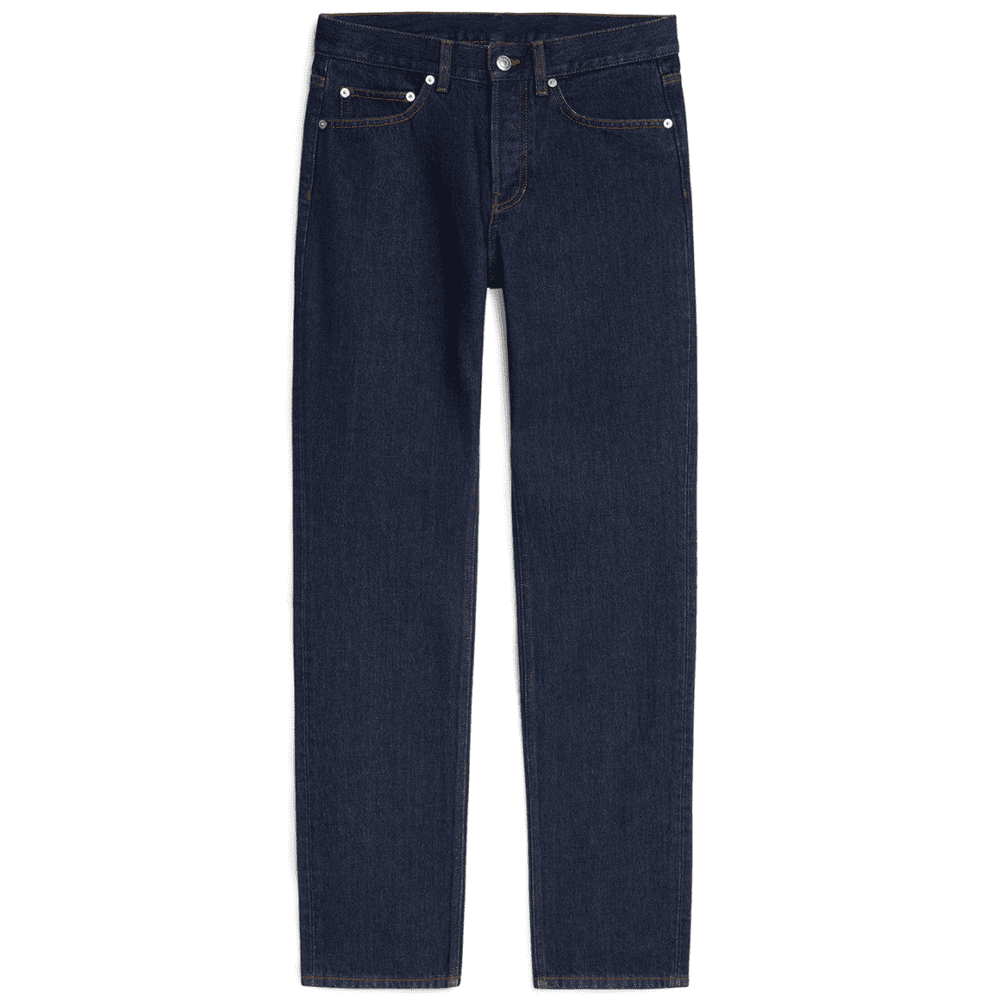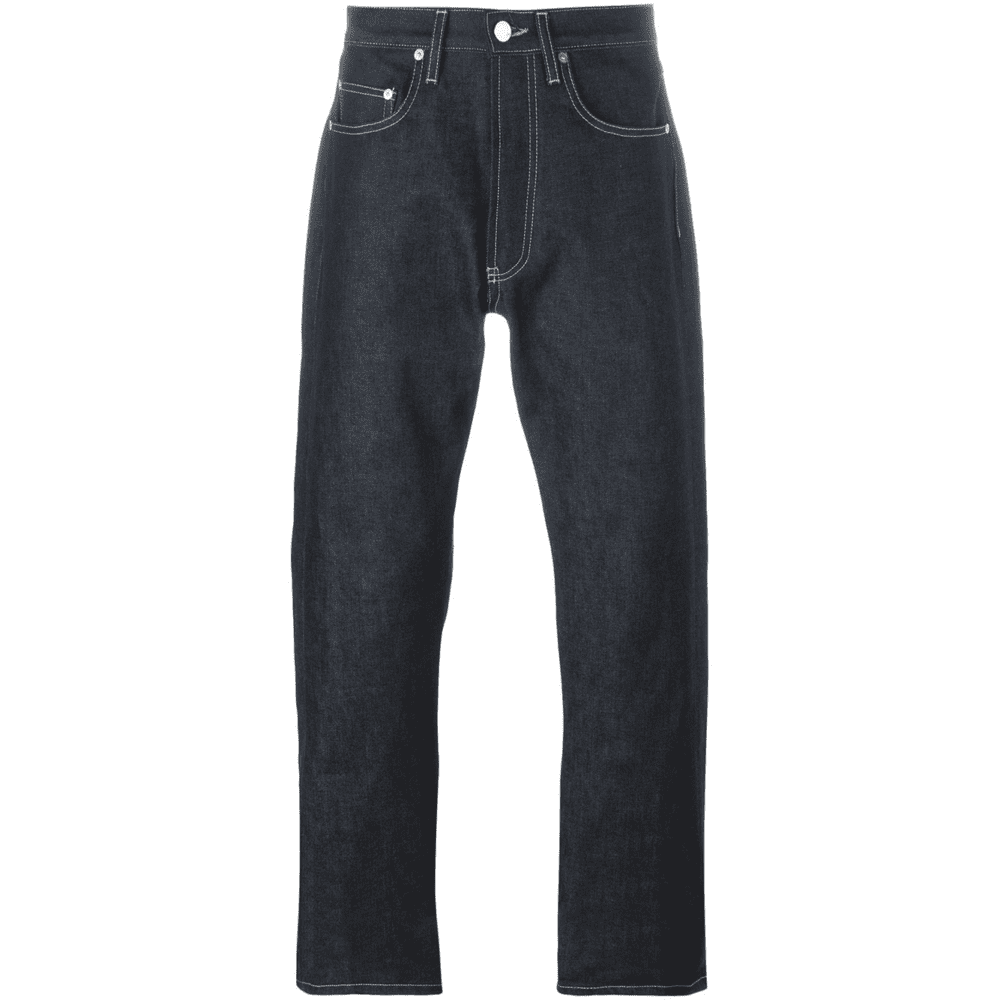Holy Grail: How to Find Perfect Fitting Jeans
Originally created as workwear way back in 1873, jeans have become a wardrobe essential for any modern man due to their innate practicality and versatility. However, shopping for denim is a situation many of us dread – with so many cuts, styles and brands on the market these days, securing the perfect pair of jeans can seam like an nigh-on impossible task. But fear not, follow our 4-step plan below and your denim will always look as though it was made bespoke for you.
1. Know Your Size
When buying any piece of clothing, it’s imperative you know your true measurements. Not only does going shopping armed with this information take the guesswork out of buying, it can also help you quickly find styles that will fit online, by using the correct size filters.
There are two things that you’ll need in order to figure out your current size: a flexible tape measure and a healthy dose of realism. Don’t lie to yourself about what your measurements are – this will only lead to frustration and a depleted bank account.
The majority of brands use waist and inside leg length in inches for sizing (e.g. 32/34 would correspond to a 32″ waist and 34″ inside leg), so the best place to start is with your waist measurement.
Waist
Take your tape measure and measure around the smallest part of your waist – not your hips – and note it down. Don’t pull at the tape measure to make it smaller and don’t loosen it to make it bigger as this will give you an improper measurement.
Generally, men’s sizing for jeans and trousers jumps up in twos. For example, many brands will produce a 28″ and 30″ waist without offering a 29″ version. If you’re between sizes, don’t panic, this is a common situation that many men find themselves in. The best option is usually to go up as size; so if your waist measures 29″, opt for a 30″ waist – you can always have the jeans taken in at a local tailor (see Step 4), but you can’t make them bigger.
Inside Leg
The next step is to measure your leg length. It’s best to have a willing helper to do this. Get them to measure from the top of your leg (under your crotch) all the way down to the bottom of your ankle. This will give you your inside leg measurement.
It’s important to note that this is a body measurement and you should always check individual garments for fluctuations in length. For example, a lot of retailers these days are producing cropped styles, in which case the leg length will naturally be shorter.
Now that you have secured these two key measurements, you should consider which style and rise is right for you.
2. Pick the Right Style
Jeans come in all shapes and sizes, so it’s best to know which ones are going to suit your specific body shape and needs. Below is a list of the most common fits your will find on the market today, as well as the type of men they suit.
Skinny Fit

Nudie Skinny Lin Organic Stretch-Denim Jeans £90 >
This style of jean will likely bring back a lot of bad teenage memories, but don’t write off the skinny jean just yet. Skinny jeans are exactly that: skinny. Rather than taper out at any point on the leg, they fit snug all the way down, so there isn’t much room for manoeuvre in certain areas.
We’d suggest avoiding skinny jeans if you’re carrying excess weight (whether that’s muscle or body fat) as they will cling to problem areas (only serving to highlight them) and can make you appear extremely top heavy.
If you’re slim or have a lean, athletic build then skinny jeans could work for you, particularly if you’re shorter as they produce a streamline, sleek silhouette that gives the appearance of length. However, be aware that they will emphasise just how thin you are, so avoid if you’re conscious of your chicken legs.
Slim Fit

Blackhorse Lane E8 Slim Indigo Selvedge Jeans £240 >
Slim-fit jeans are a great default option for almost all men. Flattering on the majority of body shapes, this cut bridges the gap between skinny and straight, offering the perfect in-between fit.
Slim-fit jeans are tapered all the way around the leg, but aren’t as tight and restricting as their skinny-fit counterparts, allowing them to be worn in smart-casual looks and even paired with tailoring.
The only guys that should be wary of slimmer cuts are muscular and larger men, for similar reasons to skinny fits: they can cling too tight, making you look bigger than you are and/or top heavy.
Straight Fit

ARKET Regular Rinsed Indigo Jeans £59 >
The straight fit has undergone a renaissance in recent years, with modern men rebelling against the constricting and sometimes ball-breaking experience of trying to fit into a pair of skinny- or slim-fit jeans.
Considered by many to be the original denim cut, straight-leg jeans run up and down with very little taper, making them ideal for those with large or muscular legs. They’re also extremely flattering for those carrying weight around their mid-section, and will add balance to stacked men.
Skinny guys will want to avoid this fit, as the wider leg can drown their narrow frame, making it look like you raided your older brother’s wardrobe. Shorter men would also be advised to avoid going too wide, for the same reasons.
Taper Fit

Acne Studios Max Tapered Jean £169 >
A relatively new style that has risen to prominence thanks to the modern generation’s obsession with the gym and weight lifting. Taper fits are cut straight at the thigh, providing some much-needed room for huge quads, then narrow (“taper”) from knee to ankle, creating a more tailored silhouette in comparison to straight fits.
Ideal for guys who never skip leg day, tapered fits can also work for slightly heavier men, who need room around the waist and thigh but want the slimming effect that a slimmer lower leg provides.
Wide/Loose Fit

E. Tautz Loose Fit Jeans £165 >
This could be considered a bit of a trend style – with men rebelling against years of slim and skinny fits and designers continuing to plunder the skate community for inspiration – but wide fits offer unrivalled comfort and can look great when styled correctly.
Wide-leg jeans should be considered a fashion statement, therefore anyone could choose to buy a pair – whether muscular, tall, short or skinny. That said, for those carrying extra pounds, opting for wide-leg jeans can have the adverse effect of making it appear like you’re trying to conceal your weight, drawing attention to the issue. In this case, stick with straight or tapered styles in dark washes, which will be much more flattering.
Boot Cut
Just no.
3. Get the Rise Right
The “rise” is a term that continues to confuse the majority of men. It’s not as complicated as you might think; it’s simply the measurement from the crotch to the top of the waistband. There are three commons types of rise you will come across when shopping for jeans: high, mid, and low.
High rise
A longer rise means the waistband sits just above the belly button. It’s best to avoid tucking in your shirt with high-rise jeans, unless your personal style icon is Simon Cowell. This is quite a retro option and probably one to avoid for most modern men.
Mid rise
A medium rise means the waistband sits just below your belly button, at your natural waist (which we measured earlier). The “standard” option, mid-rise jeans will allow the wearer to tuck their shirt in comfortably, without it coming unstuck. This is a great option for almost all men. If in doubt, go for a mid rise.
Low rise
A short rise means the waistband sits around the hips, producing a more casual fit and relaxed appearance. Shorter guys should avoid low-rise jeans as they can make your legs appear shorter than they are. Inversely, this makes them a great option for taller gents or those who have a short torso and longer legs, which need balancing.
4. Tailor Them to Your Needs
Having items tailored to your body is no longer a luxury reserved for the wealthy – it’s a service that is readily available on the high street, so why not take advantage? Getting your jeans professionally altered to fit you like a glove is something all stylish men should consider, as it will instantly elevate your look.
Common alterations include adjusting the leg length (particularly handy if you’re short – just buy the correct waist size and rise), and reducing the waist so that they fit perfectly without a belt. These are both relatively low-cost alterations (brands like Levi’s even offer length adjustments for free in certain stores) that you will definitely see a return on investment from – after all, just think how often you wear your jeans.







